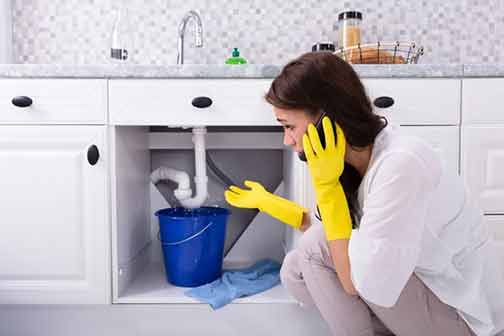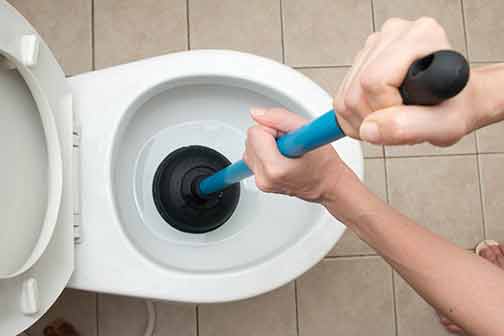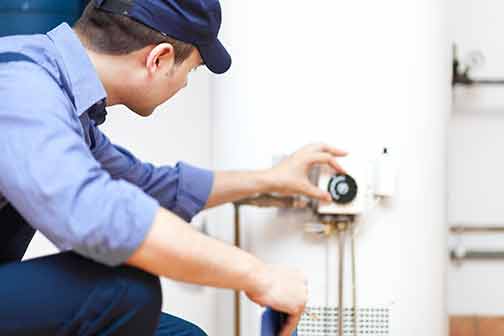Plumbing emergencies can occur without any warning, leaving homeowners stressed and overwhelmed. From burst pipes to overflowing toilets, these issues require immediate attention to minimize damage and prevent any further complications. In this article, we will discuss how to react and temporarily fix plumbing emergencies while waiting for professional assistance.
Identifying the Emergency
Before taking any action, it is crucial to identify the plumbing emergency at hand. This will help you understand the severity of the issue and determine the appropriate steps to take. Common plumbing emergencies include:
- Burst or leaking pipes
- Clogged or overflowing toilets
- Blocked drains or sewer backups
- Malfunctioning water heaters
- Gas leaks
Step 1: Shutting off the Water Supply
In most plumbing emergencies, it is crucial to turn off the main water supply to prevent further damage. Locate the main shut-off valve, typically found near the water meter, and turn it clockwise until it is fully closed. This will stop the flow of water to the affected area, minimizing the potential for flooding.
Step 2: Dealing with Burst or Leaking Pipes
A burst or leaking pipe can cause significant water damage if not addressed promptly. Follow these steps to temporarily fix the issue:
- Turn off the water supply to the affected area.
- Drain any remaining water by turning on the faucets.
- Apply a temporary patch using a pipe clamp, rubber, or epoxy putty. This will help stop or slow down the leak.
Step 3: Coping with Clogged or Overflowing Toilets
Clogged or overflowing toilets can be messy and inconvenient. Here’s what you can do to temporarily fix the issue:
- Stop the water flow by turning off the toilet’s water supply valve, usually located behind the toilet.
- If the water level continues to rise, remove the toilet tank lid and lift the float ball or cup. This will prevent additional water from entering the bowl.
- Use a plunger to try and clear the clog. Apply consistent and firm pressure to create suction, which can dislodge the blockage.
- If the clog persists, avoid using chemical drain cleaners, as they can damage the pipes. Instead, contact a local drain cleaning plumber to handle the clog.
Step 4: Managing Blocked Drains or Sewer Backups
Blocked drains or sewer backups can cause foul odors and unsanitary conditions. While waiting for a professional plumber, follow these temporary solutions:
- Try using a plunger to remove the obstruction. Make sure to create a tight seal around the drain and apply firm pressure.
- If the plunger doesn’t work, avoid using chemicals that may worsen the blockage. Instead, consider using a drain snake or auger to manually remove the debris.
- Keep in mind that sewer backups may require specialized equipment to resolve properly. Contact a professional plumber as soon as possible.
Step 5: Handling Malfunctioning Water Heaters
A malfunctioning water heater can leave you without hot water, resulting in discomfort and inconvenience. To address this issue temporarily:
- Turn off the power supply to the water heater by flipping the appropriate circuit breaker.
- If you notice any leakages, shut off the water supply to the heater.
- Contact a licensed plumber to repair the water heater. Attempting to fix it yourself can be dangerous and may cause further damage.
Step 6: Responding to Gas Leaks
A gas leak poses a severe threat to both your home and safety. If you suspect a gas leak, follow these crucial steps:
- Leave your home immediately, ensuring everyone is safely outside.
- Avoid using any electrical devices, open flames, or switches, as they can ignite the gas.
- Call your gas utility company or emergency services to report the leak. Do not try to fix the issue yourself.
- Wait for professional assistance before reentering your home.
Conclusion
Addressing plumbing emergencies promptly is essential to minimize damage and ensure the safety of your home and family. While these temporary fixes can provide some relief, it is crucial to remember that they are not permanent solutions. Always seek the expertise of a residential plumber to properly diagnose and resolve plumbing issues to avoid further complications.


